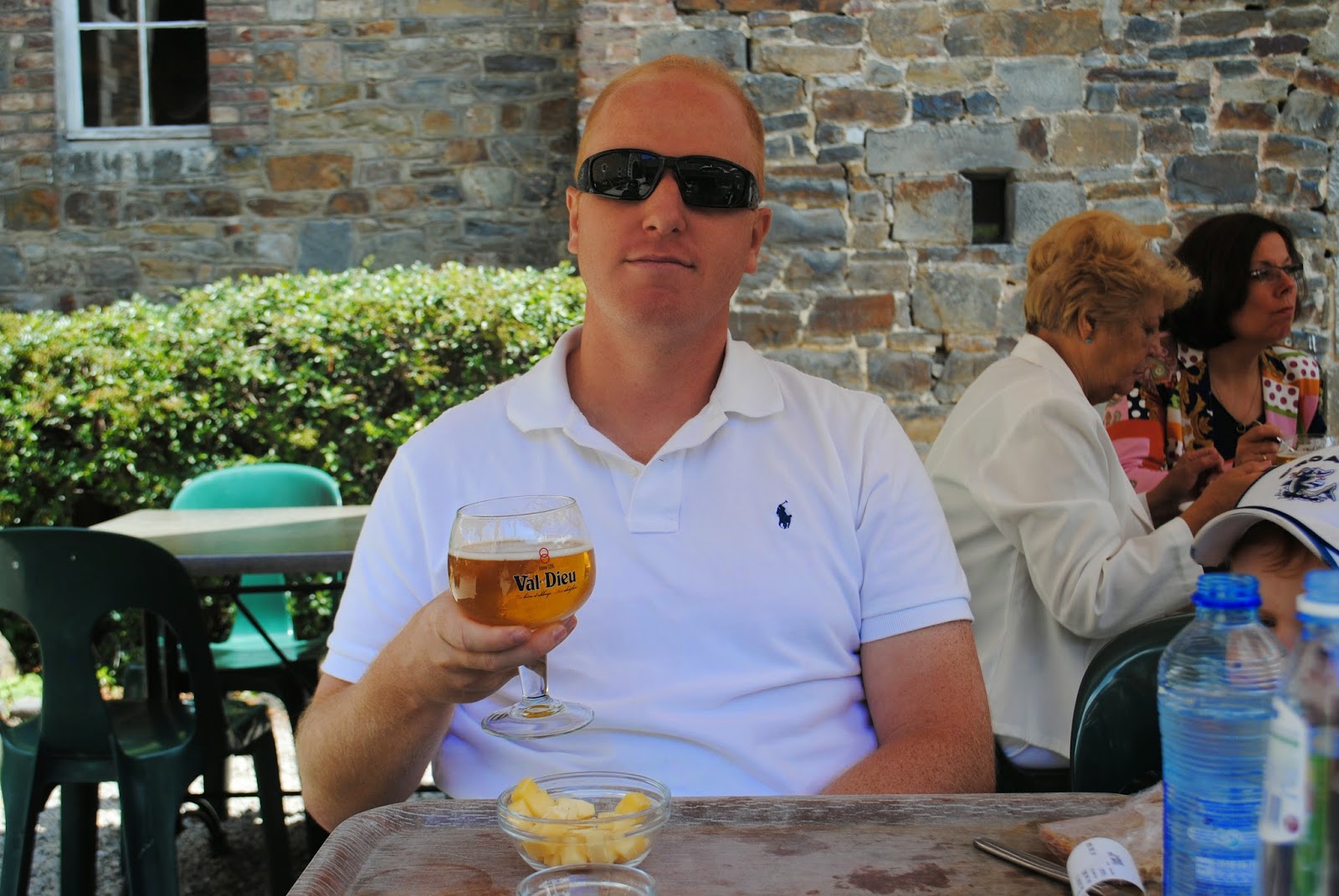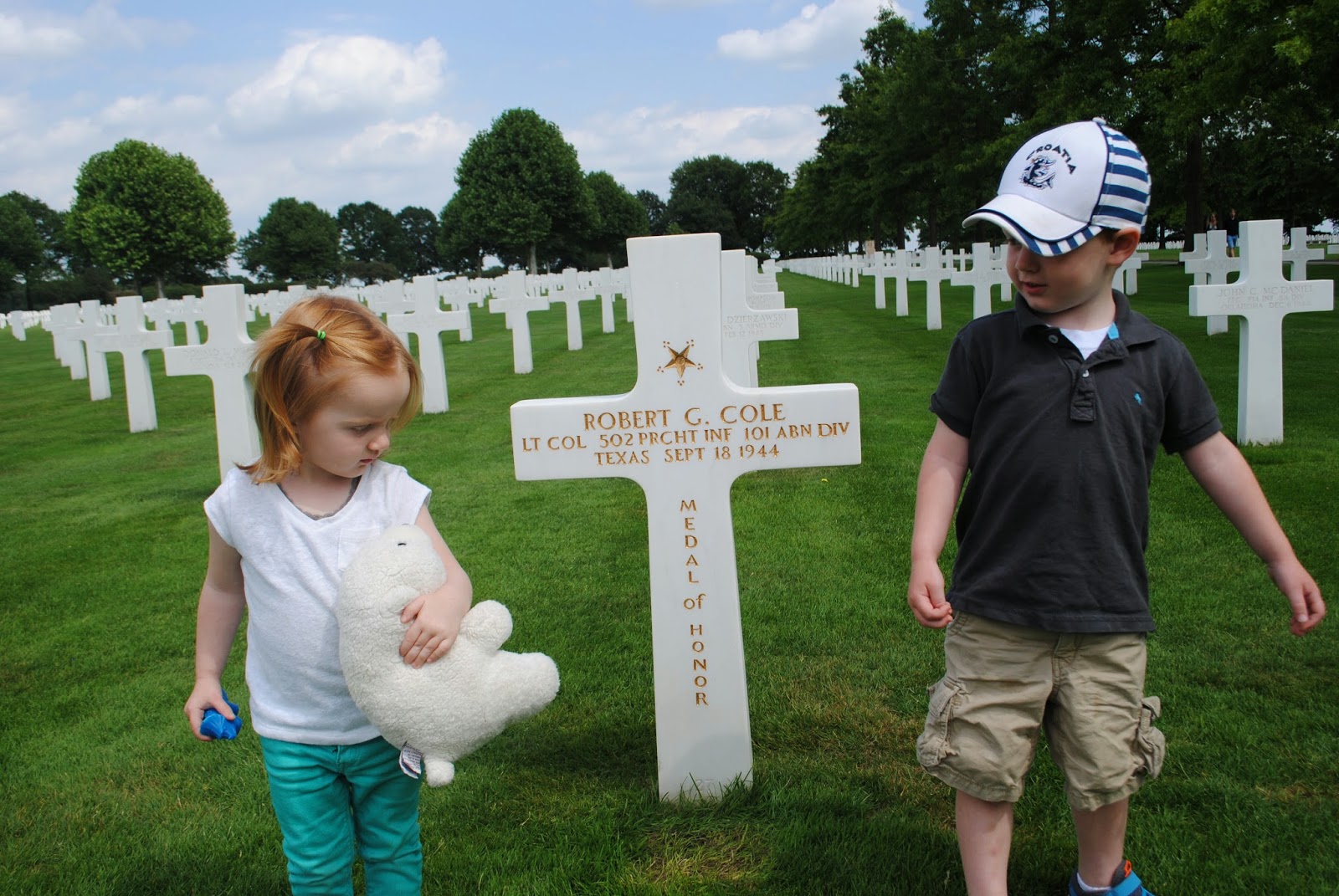First stop, was the Val-Dieu Abbey in Aubel, Belgium. This former Cistercian monastery dates back to 1216 when a small group of monks settled in the area. This original settlement was called Vallis Dei (French: Val-Dieu; English: Valley of God). The original church, and three others that came after, were destroyed in wars, but the abbey and the grounds that still stand today are still impressive. In addition to getting to see the beautiful church abbey, did I mention that they also happen to brew fantastic beer?
So here's a little beer history lesson for all those beer lovers out there. And I am not going to reinvent the wheel here, so instead here is the abbreviated version (with assistance from Wikipedia):
"Beer in Belgium dates back to the age of the first crusades, long before Belgium became an independent country. Under Catholic church permission, local French and Flemish abbeys brewed and distributed beer as a fund raising method. The relatively low-alcohol beer of that time was preferred as a sanitary option to available drinking water. The Trappist monasteries that now brew beer in Belgium were occupied in the late 18th century primarily by monks fleeing the French Revolution. However, the first Trappist brewery in Belgium (Westmalle) did not start operation until 10 December 1836, almost 50 years after the Revolution. The first recorded sale of beer (a brown beer) was on 1 June 1861."
So now when I order a beer I will make sure they know that it's really just a matter of sanitation....
The beer brewed at Val-Dieu, where we visited, is considered an Abbey beer.
"The designation "abbey beers" originally applied to any monastic or monastic-style beer. In 1999 the Union of Belgian Brewers introduced a "Certified Belgian Abbey Beer" logo to indicate beers brewed under license to an existing or abandoned abbey, as opposed to other abbey-branded beers which the trade markets using other implied religious connections, such as a local saint. The requirements for registration under the logo include the monastery having control over certain aspects of the commercial operation, and a proportion of profits going to the abbey or to its designated charities. Monastic orders other than the Trappists can be and are included in this arrangement. As of 2011 eighteen certified Abbey beers existed."Included in these 18 are a few of Bill's favorites- Affligem, Grimbergen, and Leffe. And of course a few favorites from the non-certified Abbey beers, such as St. Bernardus and Tripel Karmeliet.
But, these "Abbey Beers" are not to be mistaken with "Trappist beers."
"The brewing of Trappist beers takes place in Trappist monasteries. For a beer to qualify for Trappist certification, the brewery must be in a monastery, the monks must play a role in its production and the policies and the profits from the sale must be used to support the monastery and/or social programs outside. Only eight monasteries currently meet these qualifications, six of which are in Belgium, one in the Netherlands and one in Austria. Trappist beer is a controlled term of origin: it tells where the beers come from, it is not the name of a beer style. Beyond saying they are mostly top-fermented, the Trappist beers have very little in common stylistically."
Ok, good. Now that we have brushed up on our brewing history, here are a few pictures from Val-Dieu:
We obviously can't take credit for this one, but here's an aerial view of the Abbey.
The abbey is set in such a beautiful countryside that it draws a lot of bicyclists. We particularly liked this group of bikers from Holland that were in Belgium for the weekend. "We tell our wives we bike," they told us as they ordered a few rounds of beers. They even let Jacob show them his fire truck and take a photo.
At this point I need to remind you that most Belgium beers have at LEAST 6% alcohol, so this is what happens when Daddy has a few beers at lunch. Bria enjoyed picking flowers to put on his face.
Sorry Daddy, nap time is over.
Our next stop was to the World War II American Cemetery in Margraten, Netherlands. 8,301 Americans are buried here, including 8 Medal of Honor recipients. On the walls leading up to the burial site are the names of 1,722 missing American soldiers.
View of the reflecting pool and statue of a mother grieving her son.
Reminiscent of Normandy.
We didn't encounter any other Americans when we visited, mostly European and Dutch tourists. We were just blown away by the notes the locals are still leaving at the grave sites.


























No comments:
Post a Comment